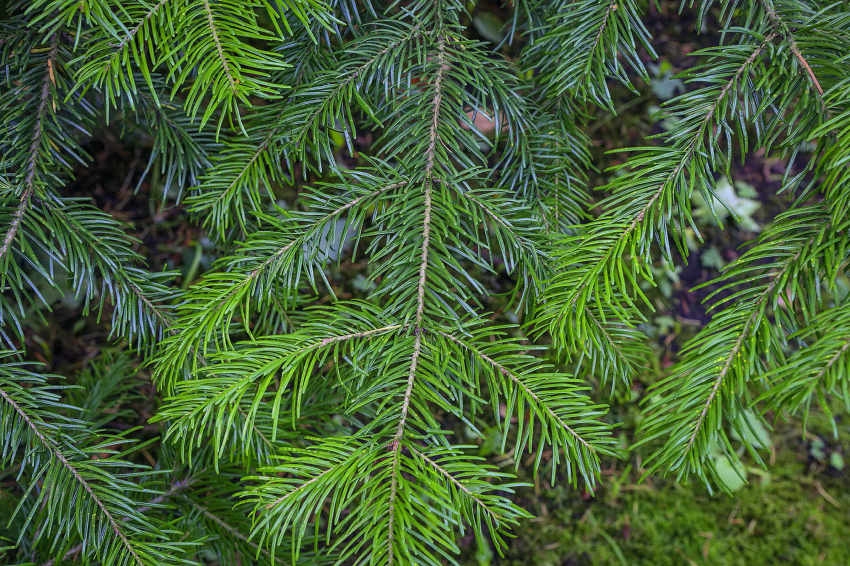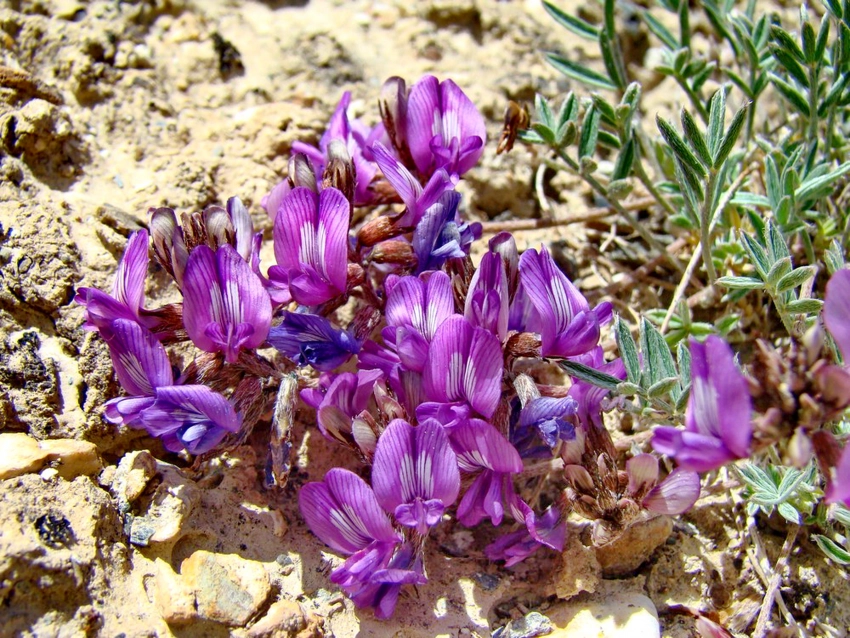RED BOOK: KG13 Key Biodiversity Area Karasuu
Species that initiated the designation of KBA [and other globally threatened species that are present in the KBA but have not been confirmed to meet the global KBA criteria]: Acantholimon linczevskianum. Allium dodecadontum. Allium formosum. Delphinium knorringianum, Festuca tzveleviana, Phlomoides kurpsaica, Scutellaria andrachnoides, Seseli galioides, Seseli korshinskyi, Silene fetissovii, Silene neoladyginae.

Akantolimon of Lynchevsky (Acantholimon linczevskianum)
Genus: Acantholimon < Plumbaginaceae < Plumbaginales < Magnoliopsida < Magnoliophyta.
Botanical description of the genus: Representatives of the genus are perennial evergreen subshrubs that form dense, hard, continuous cushions and carpets. The homeland of acantholimon is the steppe and mountainous regions of Armenia, Asia Minor, Tibet, the Mediterranean and the Caucasus. The genus Acantholimon consists of 295 species of evergreen plants.
Acantholimons are distinguished by their height, which can reach from 30 centimeters to 1 meter. The root system is well developed, of a mixed type, which allows it to grow well on rocky and gravelly substrates. Stems erect, branched, woody at the base. The leaves are intense dark green, rather long, hard, and needle-shaped. Elastic needle-like leaves are collected in rosettes. Fitting tightly to each other, they form neat prickly pillows.
Flowers in one-sided spike-shaped inflorescences. The corolla color ranges from pale pink to bright pink. Acantholimons bloom from July to August.
Interesting facts:
Acantholimon (lat. Acantholimon) is a genus of ground cover plants belonging to the family Plumbaginaceae. The name of the Greek etymology, “acanthos” – thorn and “leimon” - meadow, explains the life form of the plants.
Acantholimons are used in landscape design to create alpine slides and rocky gardens. In addition, the extract of these plants is used to treat wounds, burns and inflammatory processes on the skin. Acantholimones also have antibacterial properties and can be used as an antiseptic.
Sources of information:
https://101dizain.ru/wiki/plant/alp/akantolimon.html
https://diymaven.ru/78320-akantolimon
Herbarium photo source:

Allium dodecadontum
Status: VU. A narrowly endemic species of the Chatkal Range.
Description: Perennial herbaceous bulbous plant, geophyte, xeromesophyte. Bulbs are solitary, round, 8-10 (12) mm in diameter, with gray paper shells. Bulbs are single, smooth. Stems 60 - 80 cm in height, 1.5 - 5 mm in diameter, ribbed, covered with leaf sheaths at the base. Leaves 2, flat 2.5 - 6 mm wide, rough along the edge. Inflorescence hemispherical or almost round, dense, many-flowered. Pedicels 1.5 - 2 cm, glabrous at the base. The tepals are pink-violet, with a slightly prominent midrib, narrowly triangular-lanceolate, twisted and recurved after flowering. Filaments 1.5 times shorter than perianth, bidentate, ciliate at base. Ovary long-pedunculated, rough.
Biology features: Blossoms and fructifies in V - VI.
General spreading and in the country: Chatkal ridge
Places of growth: Thickets of shrubs and forest edges in the middle belt of mountains.
Quantity No information.
Limiting factors: Human economic activity: spring grazing, picking flowers, digging bulbs.
Cultivation: No information.
Existing protection measures: Protected in the Sary-Chelek Reserve.
Protective measures are recommended: Organization of botanical reserves in places of the highest concentration of the species, monitoring of the state of populations. Prohibit digging bulbs, grazing.
Source of information: Red Book of the Kyrgyz Republic. 2nd edition - Bishkek, 2007
Source of photo:

Beautiful onion (Allium formosum Sennikov & Lazkov)
The genus Onion (Allium) is very specific to Central Asia. There are about 250 species and subspecies, and this number is constantly updated with descriptions of new species of this region.
The beautiful onion is a local endemic to the Babash-Ata mountain range located east of the Fergana Valley in Kyrgyzstan, recommended for legal protection as endangered due to the very small population size at its only locality.
The bulbs are almost spherical, 7–8 mm in diameter.
The petiole is single, 20–25 (30) cm long, up to 1.5 mm in diameter, hard, dark green with a slight purple tint at the base.
Leaves - 2(3), linear, not protruding beyond the stem, erect, with a blade up to 20 cm long, about 1.5 mm wide, rounded-appressed and spiny when cut, dark green, glabrous, with sheaths up to 10 cm long The covering is membranous, completely divided into two elongated valves 4–6 mm long, curved.
The inflorescence is hemispherical, rather loose, with 5 abortive buds; the pedicels are thin, thickened at the base, straight, dark green, the same length, about 1.5 cm long, some of them are enclosed in narrow blades about 1 mm long.
The perianth is cup-shaped, intensely pinkish-purple in the upper two-thirds, the base is whitish, with dark purple midribs.
Flowering in July, fruiting unknown.
Ecology. The species is found in the low-mountain forest zone (altitudes about 1600–1700 m) in river valleys, on open sunny slopes with sparse savanna. Plants are grouped in small areas.
Distribution. Possibly a narrow endemic of the Babash-Ata ridge, known so far only from the type locality.
Proposed conservation status. The distribution area of this species is similar to other local endemics of the mountains east of the Fergana Valley. 10 clusters of flowering plants were observed. The territory is actively used, primarily for grazing and mining. For this reason, and also because of its very limited distribution area and small size. The only known population to date is estimated to contain fewer than 250 mature individuals.
Source of information:
https://www.researchgate.net/publication/241695105_Allium_formosum_Sennikov_Lazkov_Amaryllidaceae_a_new_species_from_Kyrgyzstan
Source of photo:

Larkspur of Knorring (Delphinium knorringianum)
Delphinium < Ranunculaceae < Ranunculales < Magnoliopsida < Magnoliophyta.
Botanical description of the species: Perennial.
Flowers: perianth zygomorphic, with a spur; number of petals 5; inflorescence raceme.
External signs of leaves: leaves are simple; shape - round; division - pinnate.
Differences in shoots: the leaf arrangement on the shoot is regular.
Fruits: dry type; dry leaflet. Blossoms and bears fruit in June-July.
Ecology. It grows in rocky habitats, among thermophilic juniper forests, at altitudes of 1500-2100 m above sea level. u. m. Distribution in Kyrgyzstan. Alai, Atoynok, Turkestan and Fergana ranges.
General distribution. Endemic.
Cultivation. No information available.
Meaning. Ornamental plant.
Conservation measures in Kyrgyzstan. The species is included in the Red Book of Kyrgyzstan (2007).
Interesting Facts: Larkspur was discovered in Europe in the 16th century, and its name comes from the Latin word "viburnum", which means "living". The roots of larkspur are used to make medicines, while the leaves and flowers are used in cooking and the food industry.
Source of information: https://openfito.ru/vids/vid/33882
Lazkov G.A., Umralina A.R. Endemics and rare plant species of Kyrgyzstan (Atlas) – FAO. Ankara, 2015
https://florn.ru/75886-zivokost
Source of photo:

Festuca tzveleviana
Fescue is a numerous genus of the Cereal family, uniting 664 species. They are perennial herbaceous plants that grow primarily in the temperate biome. The native range of this species is southeast from Siberia to the Russian Far East and Northern China.
Botanical description of the species: Flowers: size - up to 1 cm; perianth inconspicuous; inflorescence - spike.
External signs of leaves: shape - linear; division - absent; attachment - sessile, vaginal; edge - smooth; leaves - simple; shape - lanceolate.
Differences in shoots: the leaf arrangement on the shoot is regular.
Fruits: type - dry; dry grain; color with shades of yellow.
Interesting facts: Pliny the Elder was the first to give the name to the fescue genus, describing it in the famous “Natural History”.
The study of the life forms of cereals growing on the territory of Kyrgyzstan showed that all of them are herbaceous plants that do not have woody shoots. Exceptions are the Western Tianshan species Festuca tzveleviana Lazkov (endemic to Kyrgyzstan) and Elymus aemulans (Nevski) Tzvel. (endemic to Central Asia). A distinctive feature of these species is the peculiar lignification of the lower part of the stem. The stems become stiff with age, perhaps silica is deposited in them and the process of lignification occurs.
Sources of information:
https://vak.kg/wp-content/uploads/2022/04/Avtoreferat-Usupbaev-A.-K..pdf
https://leplants.ru/festuca/
Source of photo:

Kurpsai Phlomis (Phlomoides kurpsaica)
Genus (Phlomis), numbering about 100 species of herbaceous plants, is included in the Lamiaceae family (Lamiaceae, or Lamiaceae) The Latin name of the genus - Phlomis - comes from the word "flame". This is due to the fact that in stale leaves the plants curl up and are used as wicks for oil lamps.
Biological description of the genus. Perennial subshrubs or shrubs with lanceolate or oval entire leaves. The flowers are two-lipped, in false whorls, forming a common spike-shaped inflorescence, the corollas are pink or purple, sometimes yellow.
Flowering in mid-summer.
Interesting Facts: Plants of the Lamiacea family are successfully used in the treatment of many diseases due to the content of a large number of biologically active compounds in their composition.
Photo source:

Scutellaria andrachnoides
Status: VU. The rarest rock species, narrowly endemic for a small section of the Naryn canyon. Decorative plant.
Description Subshrubs with a large number of ascending or erect, thin, simple stems 4-12 cm in height, gray from dense pubescence of the smallest hairs. Stem leaves in two pairs, 0.5-1.5 cm long and 0.3-1.3 cm wide, broadly ovate, with a heart-shaped or rounded base, obtuse, entire, bluish-green from dense pubescence of the smallest hairs, dense, leathery. Bracts 0.5-1 cm long, 2.5-6 mm wide, broadly or narrowly ovate, almost membranous. Apical inflorescences up to 2 cm long, ovate-oblong, dense; the lateral ones, located in the axils of the upper leaves, are shorter, 1 cm. The calyx is shortly hairy and glandular, 2 mm long, fine in texture, slightly enlarged with fruits. The corolla is small, about 1 cm long.
Biological features: Blooms until IX. Seed reproduction.
General spreading and in the country: Grows along the Naryn River in the foothills of the Kyrgyz part of the Ferghana Valley.
Places of growth: Rocks in the lower belt of mountains.
Quantity: Very insignificant.
limiting factors: Various chores and flower picking reduces renewal and inventory.
Cultivation. No information available.
Existing protection measures: Listed in the Red Book of the USSR (1984), the Red Book of the Kirghiz SSR (1985). Special measures have not been developed.
Protective measures are recommended: It is necessary to clarify the state of the populations and allocate protected areas in places of greatest concentration.
Source of information: Red Book of the Kyrgyz Republic. 2nd edition – Bishkek, 2007
Source of photo:
Seseli galioides Lazkov
The name of the species is given due to the similarity of its leaves with the leaves of some species of the genus Bedstraw (Galium).
Distribution: The species grows in the Chatkal region of the Central Asian floristic province, on the northern spurs of the Fergana Range in the Karasu River basin.
Botanical description of the species: The plant is perennial, polycarpic. The root is taproot, cylindrical. The caudex is multi-headed, covered with the remains of petioles of dead basal leaves. Stems are 40-60 cm tall, branching almost from the base, rounded, thin, slightly furrowed, briefly pubescent. The leaves are mostly basal, dark green, short pubescent. Basal leaves on petioles 2-5 cm long, expanded at the base into a membranous sheath; with an oblong-lanceolate plate 5-15 cm long, 1.8-4.0 cm wide, twice pinnately dissected, with 5-6 pairs of sessile, spaced, almost palmately dissected segments. The terminal lobes of the segments are linear-lanceolate, gradually becoming pointed at the ends. The upper stem leaves have a small, pinnately dissected or entire linear blade, sitting on a lanceolate, white-membranous sheath along the edge. Umbrellas without wrapper, 1.5-3.5 cm in diameter, 3-5 rays; rays 0.5-1.5 cm long., slightly unequal, densely pubescent. Umbrellas 11-20-flowered, with an involucre of 7-10 lanceolate, herbaceous, rough leaflets 1-1.5 mm long along the back; pedicels are short, pubescent. The calyx teeth are invisible. Petals are about 1 mm long, ovate, drawn out and notched at the apex, curved inwards, greenish, pubescent on the outside. The subcolumns are conical, wavy at the base, yellow. Stylodia about 0.7 mm long, reflexed. The ovary is densely pubescent. Fruits (unripe) 3-3.5 mm long, oblong, short, densely pubescent.
A source of information: https://cyberleninka.ru/article/n/novye-vidy-rodov-cirsium-hill-asteraceae-seseli-l-apiaceae-i-acantholimon-boiss-limoniaceae-iz-kyrgyzstana
Herbarium photo source:

Seseli korshinskyi
Status: EN. A rare endemic species found in small numbers and in a limited area. The species is of great scientific importance.
Description. Perennial, polycarpic, dark green plant 30-70 cm tall, with taproot. Caudex woody, densely covered with remnants of leaf petioles. Stems are rounded, branched from the base or middle. Basal leaves in a rosette, on petioles 3-10 cm long. Leaf blade up to 12 cm long, lanceolate in outline, pinnately dissected; segments 7-15 mm long, ovate or rhombic, on short petioles, shallowly lobed, unequally toothed, pubescent below, glabrous above. Stem leaves are reduced, the uppermost ones are reduced to sheaths. Umbrellas 4-6 cm in diameter, with 4-15 unequal, with fruits spaced, pubescent rays from the inside. Involucral leaflets 4-5 in number, linear-subulate, pubescent. Umbrellas 15-20-flowered, with unequal pedicels spaced at fruits. Involucral leaflets, 8-9 in number, similar to involucral leaflets. Petals are white, slightly notched, pubescent on the outside. Fruits up to 3.5 mm long, laterally compressed, short densely pubescent.
Features of biology. Blossoms in VII-VIII, bears fruit in VIII-IX.
The distribution is general and in the country. Mountains surrounding the Ketmen-Tube basin.
Places of growth. Stony-gravelly slopes, screes, limestones.
Number. Not installed. In habitats found in single specimens. limiting factors. Not known.
Cultivation. Not carried out.
Security measures are in place. Not guarded.
Protective measures are recommended. Create a botanical reserve in places with the highest concentration of plants.
Source of information: Red Book of the Kyrgyz Republic. 2nd edition - Bishkek, 2007.
Source of photo:

Silene Fetissov (Silene fetissovii)
Silene is a flowering plant of the Clove family (Caryophyllaceae).
Botanical description of the genus: Annual or perennial herbs, rarely subshrubs. Stems erect or ascending, branched.
The leaves are opposite, sessile, lanceolate, linear, spatulate, ovate or ovate-lanceolate. Leaves and stems glabrous or hairy, glandular-pubescent.
Flowers are monoecious or dioecious, in dichasia collected in common paniculate or spike-shaped inflorescences, sometimes solitary; calyx cleft; corolla white, greenish, pink or purple, often with a rim; five petals; ovary usually with three columns. Bloom from May to autumn. Plants usually quickly complete the development cycle and produce a large number of seeds.
The fruit is a three-celled capsule. In 1 g up to 2200 seeds.
Plants of the genus Silene have a sticky resinous substance called "sticky snares" into which small insects fall.
Interesting Facts: Many types of Silene are used in folk medicine. Some of the species are decorative.
In English, Silene a is called a flycatcher. In Russian, depending on the type, it is a cracker (by the type of inflorescence) and a nap. The latter name is consistent with the use of decoction from this plant by the Xhosa people of South Africa. They collect Silene flowers that blooms under the full moon, take its extract and see strange dreams.
Photo source:

Smolevka new of Ladygina (Silene neoladyginae)
Silene < Caryophyllaceae < Caryophyllales < Magnoliopsida < Magnoliophyta.
Zoning: Central Asia and Kazakhstan, Pamir and Pamir-Alai, Kyrgyzstan. Endemic to the Baubashat ridge (Fergana ridge system).
An extremely rare plant known from only one locality. Due to the narrowness of its range, the plant can be easily destroyed as a result of human economic activity.
Botanical description of the species:
Flowers: actinomorphic perianth; number of petals 5.
External signs of leaves: leaves - simple; division - absent.
Differences in shoots: leaf arrangement on the shoot is opposite.
Fruits: dry capsule; dry type.
Source of information:
https://s3.eu-central-1.amazonaws.com/biom/lib/book/ionov-lebedeva-rastit-pokrov-zap-tyanshanya.pdf
Source of photo:










